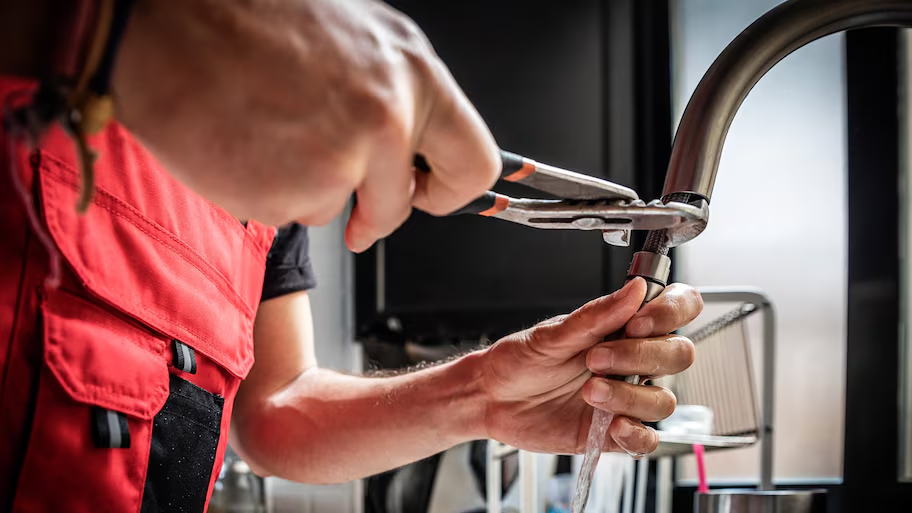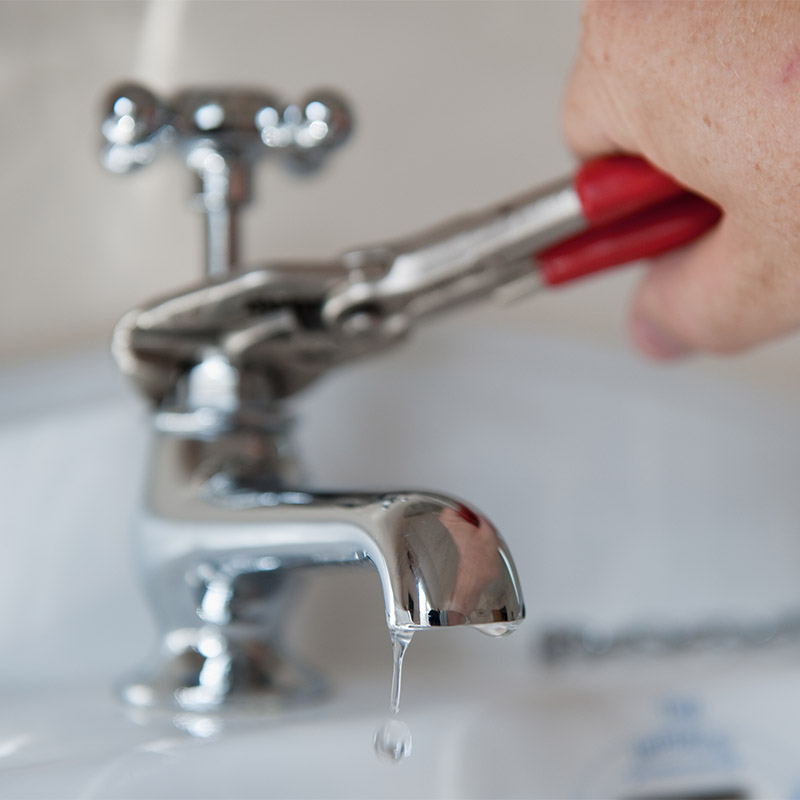An Importance of Correcting a Leaking Faucet
An Importance of Correcting a Leaking Faucet
Blog Article
On this page below you will find some quality news with regards to Why Are My Faucets Dripping (And Can I Fix It Myself)?.

Dripping faucets may feel like a small inconvenience, but their effect exceeds simply the inconvenience of the noise. From drainage to sustaining unneeded economic prices and wellness risks, disregarding a leaking faucet can cause different consequences. In this short article, we'll explore why it's important to resolve this typical house concern without delay and effectively.
Wastage of Water
Environmental Impact
Dripping taps add significantly to water wastage. According to the Environmental Protection Agency (EPA), a single faucet dripping at one drip per secondly can throw away greater than 3,000 gallons of water annually. This not only strains water resources but additionally impacts ecological communities and wild animals based on them.
Step-by-Step Guide to Repairing a Dripping Faucet
Devices Needed
Before attempting to fix a dripping tap, gather the required tools, including an adjustable wrench, screwdrivers, substitute components (such as washers or cartridges), and plumber's tape.
Common Tap Issues and Their Solutions
Recognize the kind of faucet and the specific concern triggering the drip. Common troubles include damaged washers, corroded shutoff seats, or malfunctioning O-rings. Refer to manufacturer guidelines or on the internet tutorials for step-by-step advice on repair services.
Financial Costs
Increased Water Costs
Past the ecological influence, dripping taps can inflate water bills substantially. The gathered wastefulness with time translates into greater energy expenses, which can have been prevented with prompt fixings.
Potential Home Damage
In addition, extended trickling can result in harm to fixtures and surface areas surrounding the faucet. Water buildup can trigger discoloration, corrosion, and also structural issues if left neglected, resulting in added repair expenses.
Health Worries
Mold And Mildew and Mildew Growth
The consistent presence of dampness from a leaking tap creates an excellent environment for mold and mildew and mold growth. These fungi not just compromise indoor air top quality but likewise posture health dangers, specifically for individuals with respiratory problems or allergies.
Waterborne Illness
Stationary water in dripping faucets can come to be a breeding place for bacteria and other microorganisms, raising the danger of waterborne conditions. Impurities such as Legionella bacteria flourish in stagnant water, potentially causing significant ailments when ingested or breathed in.
DIY vs. Professional Repair work
Benefits and drawbacks of Do It Yourself Fixing
While some might try to deal with a trickling tap themselves, do it yourself fixings come with their own collection of difficulties. Without appropriate understanding and tools, DIY attempts can exacerbate the issue or lead to incomplete repairs, prolonging the trouble.
Advantages of Working With an Expert Plumber
Hiring a professional plumber ensures that the underlying source of the trickling tap is attended to successfully. Plumbing technicians possess the knowledge and equipment to diagnose and fix faucet issues effectively, saving time and reducing the risk of more damages.
Environmental Responsibility
Specific Payment to Conservation
Taking duty for taking care of leaking faucets straightens with wider initiatives toward water conservation and ecological sustainability. Every individual's activities jointly make a significant influence on protecting precious sources.
Sustainable Living Practices
By focusing on timely repairs and taking on water-saving habits, people contribute to lasting living practices that profit both present and future generations.
Safety nets
Regular Upkeep Tips
To prevent trickling faucets, do routine upkeep such as cleaning aerators, inspecting for leakages, and changing worn-out components quickly. In addition, think about mounting water-saving devices or updating to more effective components.
Significance of Prompt Services
Addressing leaking taps as soon as they're discovered protects against further water waste and possible damage, eventually conserving both water and money over time.
Influence On Home Worth
Perception of Well-Maintained Residential Or Commercial Property
Keeping a residential property in good condition, including attending to upkeep issues like leaking faucets, enhances its perceived worth and desirability amongst prospective customers or renters.
Influence on Resale Value
Characteristics with well-maintained plumbing fixtures, consisting of taps, command greater resale worths in the real estate market. Attending to trickling taps can contribute to a positive impression during residential property examinations and negotiations.
Conclusion
Resolving a trickling tap goes beyond simple benefit; it's a necessary action toward saving water, decreasing monetary expenses, and protecting health and wellness and home. Whether with do it yourself fixings or specialist aid, doing something about it to deal with trickling faucets is a small yet impactful way to advertise liable stewardship of resources and contribute to a healthier, extra lasting future.
How to Fix a Dripping or Leaky Faucet
A leaking faucet is one of the most common problems that homeowners encounter, but it being commonplace doesn’t make it any less annoying. The constant drip drip drip of a leaking bathtub faucet, showerhead, or sink tap can disturb your home’s serenity. Left neglected, a dripping faucet can also result in higher water bills and discoloration or mold growth in your sink or plumbing fixtures.
Fortunately, you don’t have to be a trained plumber to know how to stop a dripping faucet. With some basic tools, replacement parts, and a little patience, leaky faucet repair is a breeze. In this article, we’ll explain what causes dripping faucets and how you can fix them.
What Causes a Leaking Faucet?
Kitchen and bathroom faucets come in all manner of designs, but most involve some combination of valves, O-rings, seals, and washers. The O-ring is usually the weakest link, but any one of these pieces can wear down over time. Heat, moisture, temperature fluctuations, minerals, mold, and movement can contribute to warping and corrosion, breaking the watertight seal. This just comes with the territory of being a homeowner. Everything is always subject to wear and tear, and some component parts of your appliances and fixtures need to be replaced on occasion. At least replacement O-rings are cheap!
More rarely, dripping faucets can be a symptom of excessively high water pressure. Were this the case in your home, you would probably notice that the leak is not isolated to one faucet. Water pressure issues are harder to resolve on your own. We recommend contacting a professional plumber if you suspect your water pressure is too high.
How to Fix a Dripping Faucet
Pipe wrench or monkey wrench Allen wrench set Screwdrivers Old towel or rag Shut off the water.
Before you do anything, you need to turn off the water to keep from drenching your kitchen or bathroom. You should find a valve under the sink and against the wall. Once you’ve turned this valve, try turning the faucet on to confirm that the water source has been cut off.
If you can’t locate your local valve for the faucet you’re working on, you can always shut off the water to the house at the main valve. Of course, this will prohibit anyone from using the sinks, showers, or toilets while you’re working on the faucet that’s giving you trouble.
Plug or block the drain.
You’ll be disassembling the faucet and removing some small bits of hardware. Plug the drain with a stopper or rag to avoid the possibility of a small screw falling into your P-trap.
Take apart the faucet assembly.
There are several varieties of kitchen and bathroom faucets, each with its own manner of assembly. For detailed instructions on how to disassemble your faucet, you can refer to the fixture’s manual or contact the manufacturer. If you know whether you have a ball, disc, cartridge, or compression faucet, you can find detailed schematics online.
In general, you need to begin by removing the faucet handles. You might notice a small screw that you’ll need to remove with a screwdriver or Allen wrench. If you don’t see any visible securing hardware, it’s likely hidden under a decorative cap that can be unscrewed or popped off with flathead screwdriver.
Remove each piece methodically, consulting a schematic when necessary. Take notes or arrange the pieces in such a way to make it easier to correctly reassemble the faucet later.
Remove the cartridge.
Once you’ve removed the handles and securing hardware, you should be able to remove the valve cartridge or stem. Some cartridges will slide right out. Other faucet models will require you to loosen a nut with a pipe wrench before you can remove the valve stem.
Examine the exposed hardware.
With the cartridge or stem removed, inspect the component parts. Check the rubber O-rings for wear and tear. Also examine the seat washer for corrosion or other damage. These pieces are usually the responsible parties for a dripping faucet, but it’s worth inspecting the other component parts while you have the faucet disassembled.
Find replacement parts.
Once you’ve identified which faucet component has failed, find an identical replacement. Your local hardware store should have O-rings, seat washers, and other standard components in stock. If you have a luxury or uncommon faucet, you may have to contact the manufacturer for a replacement part.
It’s a good idea to take your old parts with you to the hardware store so you can compare them with the store’s inventory and be sure you’re purchasing the correct replacement.
Reassemble the faucet.
With your new parts in hand, reconstruct the faucet and handles. Don’t be tempted to overtighten screws or nuts. You might think this could create a better seal, but it can instead damage or bend a delicate part of the assembly and create a new problem for you.
Turn on the water and test the faucet.
The only thing left to do is test your work. Unplug the sink, turn the water back on, and try the faucet. Congratulate yourself on a job well done!
https://www.libertyhomeguard.com/how-to-fix-a-dripping-or-leaky-faucet/

Do you really like reading up on Why Is It Important To Fix Your Leaking Tap/Faucet?? Write a remark down below. We will be happy to see your opinion about this content. Hoping that you visit us again later on. If you please take a moment to promote this blog posting if you enjoyed it. Thank you for being here. Kindly stop by our blog back soon.
Report this page